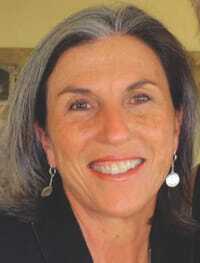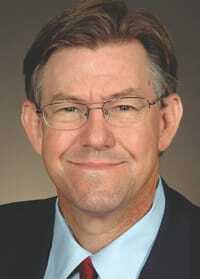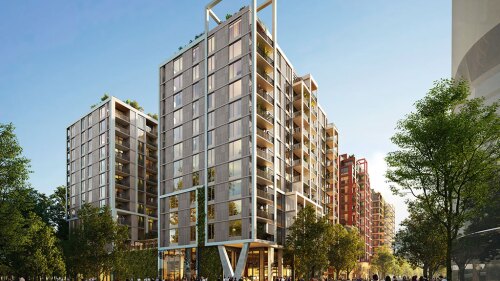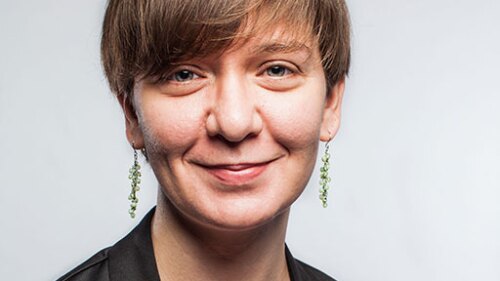Sustainability experts discuss progress and obstacles, the pros and cons of the proliferation of green rating systems, and ways the federal government could provide better support.
What do you see as the most significant advance in the push for sustainable development over the last few years?
Andy Gowder: There has been a remarkable change in public consciousness and expectations over the last two to five years with regard to sustainability. People want and expect recycling in their homes and offices and the places where they do business. They expect new construction to be LEED-certified [Leadership in Energy and Environmental Design] or green, and they expect to be able to buy energy-efficient appliances and fuel-efficient cars.
Scott Muldavin: Five years ago, there was little knowledge of sustainability in the real estate industry, and it was viewed as a fad or something separate. Today, most major companies have begun to integrate sustainability into their businesses. Leasing staff, acquisitions departments, and asset and property managers are learning how to evaluate and assess sustainability. Also, there is a growing demand by occupants and investors for sustainability, especially in the larger investment-grade properties.
| Margaret Cafarelli, founder and managing partner of Urban Developments in San Francisco and vice chair at large of ULI’s Sustainable Development Council. Andy Gowder, a shareholder at the Scott Muldavin, president of the Judi Schweitzer, chief sustainability John Shardlow, senior associate at |
Margaret Cafarelli: We are doing a better job of educating people about sustainability, and it’s becoming more a part of people’s vernacular. Everyone would like to do good, but if someone is going to buy a condominium, they won’t necessarily choose one in a LEED Platinum building as opposed to a conventionally constructed building. If you can demonstrate to the consumer that the LEED Platinum project is not only doing good, but also saving them a significant amount of money because it’s a more efficient building, then you can get people to jump on the bandwagon.
Judi Schweitzer: In California, the state’s Green Building Standards Code [CALGreen], which came out in 2010, is a significant step forward. There is also the California Public Utilities Commission’s Long Term Energy Efficiency Strategic Plan, which has the goal that all new residential construction in California will be zero net energy by 2020 and all new commercial construction will be zero net energy by 2030. California has long been an influential leader. For example, the recently developed International Green Construction Code used the California Green Building Standards Code as a model.
John Shardlow: At least in our region [upper Midwest], this recession has hit us so hard that it would be difficult to draw any strong conclusions about sustainability in the last couple of years. In terms of the big picture, there has been a considerable amount of investment in transit in our region and a pretty strong commitment to brownfield cleanup, and both of those are prerequisites for sustainable development.
What are the biggest obstacles to sustainable development?
Schweitzer: Creating a true sustainable development requires an integrated approach to design and implementation for both infrastructure and buildings. Planning and coordination with utilities is therefore critical. The utilities and the public utility commissions are organized into silos, meaning that energy efficiency is in a completely separate division from renewable energy, which is separate from emerging technologies, etc. This currently makes it very challenging for the market to effectively implement sustainable communities. The California Public Utilities Commission has approved some pilot programs that could change this. However, at the implementation level, the program managers have different motivations, resulting in challenges to innovation. One strategy is to have a joint venture agreement that allows utilities to share the costs and benefits with the public and private sectors.
Gowder: A great deal of resistance to sustainability remains in industries and sectors that have a vested interest in maintaining the status quo. Whether it’s the power utilities, the carbon-based fuel industries, or certain manufacturers, those vested interests provide a great deal of drag on efforts to innovate in buildings or transportation, particularly in terms of government policy and assistance with promoting alternative energy.
Shardlow: The biggest obstacle is the perception that sustainable design adds to costs. Just the opposite can be true. Smart designers and smart developers can find ways to have sustainability be good business. Also, I worry that the discovery of rich oil and natural gas reserves in North Dakota and its vicinity could lessen the sense of urgency in the pursuit of renewable and carbon-neutral energy sources. When the economy comes back, it will be important for our industry to lead by example. Sustainability isn’t about expendable, feel-good frills; rather, it needs to be the lens through which every project decision is viewed.
Muldavin: The biggest obstacle to more investment is the risk and uncertainty related to assessing sustainable design, execution, and financing options. We have to move beyond a focus on energy costs alone. If owners or developers believe they have the potential to create a lot of value by implementing green design, they will be willing to take greater risks and invest more. The potential for increased occupant and investor demand—driven by reduced costs, health and productivity gains, enhanced reputation, recruiting advantages, and other benefits—is a powerful motivator.
What are the advantages or disadvantages of the recent proliferation of green rating systems?
Cafarelli: The number of green rating systems is confusing to the consumer. More than having a label on a project, we as developers need to be able to demonstrate what it is we are doing so consumers know we are developing high-performance buildings. The consumer recognizes LEED as the gold standard because LEED has been the most out there. But in different parts of the country, other organizations have programs that developers can use to compare their buildings or projects. A multifamily building my firm is developing is targeting LEED certification, but we are also going to be engaging with Energy Star and CALGreen and some other programs as well.
Shardlow: I don’t think there is any inherent benefit to having a lot of rating systems. There are some disconnects between LEED and programs like Energy Star, for example, and a number of ways in which those rating systems don’t yet mesh very well. I am encouraged that the USGBC [U.S. Green Building Council, developer of the LEED program] and others recognize the problems and are actively working to address them. We need systems that measure actual environmental impacts and benefits. At the end of the day, does a particular project really reduce vehicle-miles traveled and carbon footprint? Does it really use less water and energy?
Gowder: Having different varieties of rating systems can allow them to adapt to specialized uses, either in geographic areas or building types or industry types. The drawback of having so many programs is that you have to worry about consistency, quality, and accountability, and it can be hard to compare between different rating systems.
Muldavin: One size does not fit all in real estate. Rating systems sensitive to property types, location, and type of sustainable investment can help provide a more accurate reflection of a building’s performance. Having a variety of systems can also cause confusion, but that’s less of a problem than people think. When people make decisions to rent or buy a property, they typically go into significant detail to understand the building’s performance. They don’t just rely on a rating. However, developers and owners must watch the trends in certification requirements by governments, investors, and tenants to keep their buildings relevant.
How has the economic downturn affected the sustainability movement in the real estate industry?
Muldavin: There has been a change from an emphasis on sustainability in new development to sustainability in existing buildings. Also, the economic downturn limited the amount of equity available, so the focus has been on low-hanging fruit—sustainable elements that are easy to justify, with a short payback period—as opposed to a deeper, more substantive sustainability investment.
Cafarelli: I don’t think the economic downturn has impacted sustainability. It has impacted the real estate development industry as a whole in that it’s really tough to get financing. The reality is that you still have to finance the deal, and you don’t get a leg up because you have a sustainable project. You’re still held to all of the conventional standards.
Gowder: Many developers who I consider visionary, talented, and innovative had great projects underway or in the planning stages when we entered into this economic downturn, and many of them have seen those projects stall or fail. A lot of that has to do with the difficulty of obtaining funding. I understand what happened to the traditional capital markets, but I have been disappointed in those who purport to be socially responsible investors. You would think that they would be best able to appreciate, understand, and underwrite sustainable projects. But they have been just as cautious as traditional lenders.
What federal policy changes should sustainability advocates pursue most vigorously to reduce development’s impact on the environment?
Shardlow: There is tremendous competition among regions for a relatively small pile of money available through the U.S. Department of Housing and Urban Development and through sustainable-city grant programs. It is crucial that the government makes those carrots available to encourage regions to plan for more sustainable communities from a multijurisdictional standpoint. Stormwater management is another important issue. A significant percentage of total water pollution comes from agriculture. Historically, agriculture has always been held harmless in regulations, so the burden for dealing with polluted runoff falls on cities, which contribute a relatively small percentage of the total pollutants. One big shift would be to put in place incentives to encourage agricultural entities to reduce and filter runoff.
Gowder: Funding and promoting more research and development for alternative energy is critical. We need the government to put funding and support for alternative energy at least on par with that given to more traditional energy sources. In the past few years, the federal government has done a better job of coordinating planning for housing, transportation, and energy, but we need to accelerate that so we can promote wiser community development and redevelopment, encourage more public transit, and support different modes of transportation. Policies that promote the sustainable retrofit of existing buildings, projects, and communities are also crucial.
Muldavin: The federal government can help reduce risk and uncertainty. The way to do that would be for the General Services Administration and other federal departments to continue pushing the sustainability of their own buildings as far as they can. There has been a tremendous amount of knowledge gained by that kind of pioneering investment. Also, the U.S. Department of Energy’s Better Buildings Initiative plays a very significant technical and process support role, so continuing that program is another way to reduce risk.
Schweitzer: Accounting for reduced operating costs and other benefits and savings from sustainable developments and green buildings is missing from the process of lending, underwriting, and performing appraisals. For existing buildings, the Property Assessed Clean Energy program, pioneered by [the cities of] Berkeley and Palm Desert in California, is a creative business model that bridges the gap between the short-term costs and long-term savings of sustainability. The program allows owners of existing properties to make energy efficiency improvements and install renewable energy sources, and, instead of paying upfront, incorporate the costs into property taxes and pay them off over 20 years. Therefore, if you sell your building after a few years, you only pay your pro rata share of the costs, and the obligation runs with the land. Due to the real estate bubble, however, the Federal Housing Finance Agency, Freddie Mac, and Fannie Mae have halted these programs for residential owners because of concerns about increased debt load. But these programs could have a big positive impact if we could get them going again.
Cafarelli: It would be great if developers could get tax credits for developing projects that incorporate sustainable design. There are tax credits for putting photovoltaic panels on a building, but there’s a lot more to a high-performance building than just solar power. Going for LEED or other certification standards is arduous. It requires consultants, and there are all kinds of hoops to jump through. For developers who differentiate themselves and make that commitment to green design, it would be great to have tax credits.










